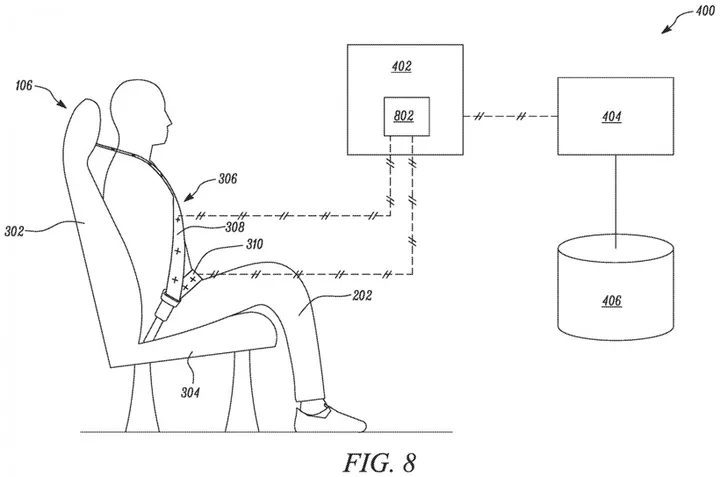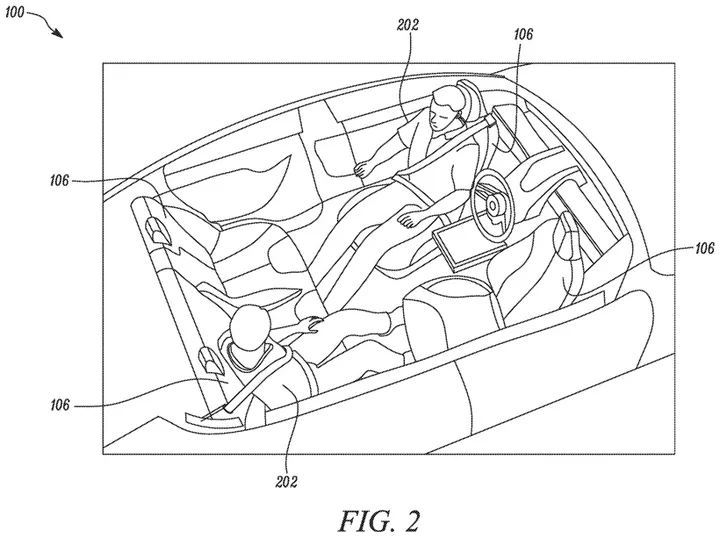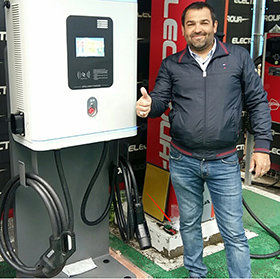Seat belts have saved countless lives since their inception, especially after Swedish engineer Nils Bohlin invented the now ubiquitous three-point seat belt in 1958. Despite being a proven safety system, people are still prone to misuse seat belts when using them - for example, Consumer Reports recently showed how drivers can trick Tesla's Autopilot monitoring system.
The magazine's testers fooled Tesla's driver monitoring system by fastening the driver's seatbelt with no one in the driver's seat. Afterwards, the magazine's testers also simply sat in the upper part of the buckled seatbelt, making the Model Y believe that the driver had buckled up. Fortunately, Tesla appears to be working on a way to stop such tricks from happening. Recently, Tesla was granted a patent outlining a system that can detect improper seatbelt use.

Tesla patent image (image source: USPTO)
The patent, entitled Improper Seatbelt Usage Detection, was published in 2019 and granted earlier this year and provides a good way to accurately determine if a passenger is wearing their seatbelt. Tesla admits that the background to the patent is to address the issue of drivers not wearing their seatbelts correctly.
In the patent, Tesla writes: "In order for the seat belt system to function, it must be worn as intended. However, the occupant cannot always do so. For example, occupants have been observed to place the shoulder belt part of the seat belt behind their backs, under their armpits or on the thigh of another occupant. Current monitoring systems are unable to determine whether occupants are using their seat belts correctly, so it is necessary to create a system that can detect improper seat belt use."

Tesla patent image (image credit: USPTO)
The Tesla patent uses sensor modules to ensure that occupants are wearing their seat belts correctly, and such sensor modules may be made of multiple sensors that can be embedded in the vehicle's seats. Some sensor modules may also use inertial sensors or radio frequency (RF) beacons that allow the vehicle to determine whether the seat belt is being used as designed. The patent also provides a controller that can receive signals from the sensors to determine whether the seat belt is being used correctly. According to the Tesla patent illustration, this system is highly relevant to vehicles that can operate without human intervention.
In the patent document, Tesla states that the system's controller includes an associative memory that can store data about the use of the vehicle, such data including personal data about the occupant, such as height, weight and general posture. Significantly, Tesla's patent aims to detect improper seat belt use, even accidental misuse, such as a driver placing a shoulder belt under their arm or a passenger allowing an unbelted occupant to rest on their lap. Tesla also outlines what can happen to the vehicle if it is determined that the seat belt is being used improperly.
In the patent, Tesla writes: "After determining that seat belt 306 has been used improperly, controller 404 may issue a warning, notify, sound an alarm, or possibly even disallow the vehicle 100 from operating until seat belt 306 has been used properly. Such warning messages may be text messages displayed on the in-vehicle entertainment information system display system, or may be alarm sounds on the in-vehicle infotainment system, or may be text messages sent to occupants who have registered their mobile phone numbers, etc. Controller 4040 can perform other types of follow-up actions to ensure that seat belt 306 is used correctly when driving the vehicle 100."
With such a system, Tesla has once again highlighted its position as the world's safest vehicle manufacturer. From the very beginning, Tesla has focused on safety, thanks to its all-electric design, which results in a vehicle with a lower centre of gravity and a huge buffer zone. However, with the advent of systems such as Autopilot, the autonomous driving system, and the seatbelt misuse detection system, professional car testers such as Consumer Reports will no longer be able to successfully trick Tesla's safety features.
Luoyang Grasen Power Technology Co., Ltd is a professional AC home charger and DC fast charger EV supercharger manufacturer for 11 years in China, the charging connectors can be any two of CCS1/CCS2/CHAdeMO/GBT. Please enter our website for more information: https://www.grasen.com. Please send email to sales@grasen.com for inquiry.

-- Marcus Groll,A Charging Station Owner in UKRAINE
Start your EV charging station businesses with Grasen. For a no-obligation quote, hit the button below, fill in your details, and we’ll get back to you.
